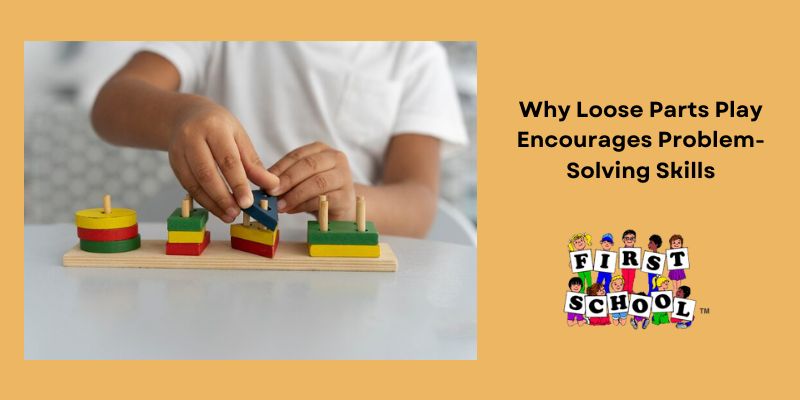



Loose parts play is a playful, open-ended approach where children explore materials like sticks, shells, buttons, or fabric scraps to create, experiment, and solve problems. It’s gaining attention in early childhood education for its ability to foster creativity, critical thinking, and collaboration. Unlike structured toys, loose parts let children take the lead, make choices, and learn through trial and error.
Let’s explore how loose parts play sparks problem-solving and ways to bring it into your home or classroom.
Loose parts play is all about providing children with materials that can be moved, combined, redesigned, and repurposed in countless ways. Unlike traditional toys with a single function, loose parts allow kids to take the lead in their play.
Some examples of loose parts include:
The key idea? There’s no “right” way to play. A single object can become many things depending on the child’s imagination. This flexibility makes loose parts play an excellent platform for problem-solving, experimentation, and creative thinking.
Unstructured play, like loose parts play, is more than fun, it’s a natural way for children to explore, experiment, and learn through trial and error.
When a child figures out that a stack of uneven stones keeps toppling, or that balancing a stick requires adjusting the base, they are actively solving problems. These small, playful experiments help children develop resilience, persistence, and the ability to think critically, skills that form the foundation for more complex problem-solving in the future.
Loose parts play supports problem-solving in multiple ways:
Through these playful experiences, children gain confidence in approaching challenges and solving problems independently or with peers.
The advantages of loose parts play extend beyond problem-solving:
In short, loose parts play supports holistic development while keeping learning joyful.
You don’t need expensive toys to get started. A few simple strategies make loose parts play safe and engaging:
Even small, intentional setups can spark hours of creative problem-solving and exploration.
Some parents and educators worry about loose parts play, but many myths are easy to debunk:
Truth: Loose parts play promotes structured learning outcomes like problem-solving, STEM skills, and social growth.
Truth: With supervision and age-appropriate materials, it’s perfectly safe.
Truth: Storage baskets and organization strategies keep play purposeful and manageable.
Truth: Loose parts play develops critical thinking, collaboration, and decision-making, all essential for school readiness.
Exploring loose parts allows children to think creatively, solve problems, and experiment in their own way. Handling everyday materials helps them build confidence, make decisions, and learn from trial and error. Whether at home or in the classroom, giving kids the freedom to explore and create encourages curiosity, collaboration, and critical thinking, setting the foundation for skills they’ll carry throughout life.
Encourage your child’s creativity, curiosity, and problem-solving skills with First School. Our approach to loose parts play gives children the freedom to explore, experiment, and learn through hands-on activities that make thinking fun.
Contact us today to discover how you can bring safe, engaging, and inspiring play-based learning into your home or classroom.